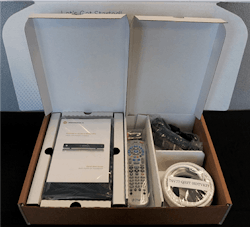Amphenol Broadband Solutions’ Self Install Kits (SIKs) are designed to bring simple and reliable installations directly into the subscriber’s hands. An SIK makes possible “touchless” consumer interactions, eliminating the need for a technician and reducing opex. Kits are available with a variety of components and packaging. A service provider can include HDMI cables, coaxial jumpers, splitters, fiber-optic jumpers, data or A/V cables as well as mounting hardware, in a kit. Push-pull or torque-nut connectors are some of the many new options to increase the simplicity of the kits.
Judge’s Comment: “Very nice packaging for Self Installation Kits. It is nice that the kit is customizable to the operator to include the CPE.”
About the Author
BTR Staff
EDITORIALSTEPHEN HARDY
MATT VINCENT
KRISTINE COLLINS
JEAN LAUTER
STEPHEN HARDY
Editorial Director and Associate Publisher
[email protected]
MATT VINCENT
Senior Editor
[email protected]
KRISTINE COLLINS
Business Solutions Manager
(312) 350-0452
[email protected]
JEAN LAUTER
Business Solutions Manager
(516) 695-3899
[email protected]
Sign up for our eNewsletters
Get the latest news and updates
